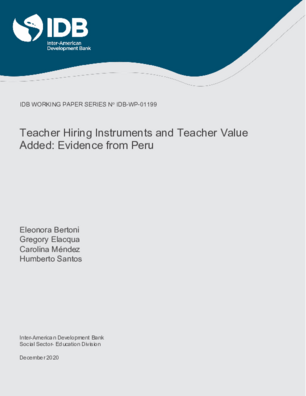Teacher Hiring Instruments and Teacher Value Added: Evidence from Peru
Date
Mar 2021
In this article, we explore whether the evaluation instruments used to recruit teachers in the national teacher hiring process in Peru are good predictors of teacher effectiveness. To this end, we estimate teacher value-added (TVA) measures for public primary school teachers in 2018 and test for their correlation with the results of the 2015 and 2017 national evaluations. Our findings indicate that among the three sub-tests that comprise the first, centralized stage of the process, the curricular and pedagogical knowledge component has the strongest (and significant) correlation with the TVA measure, while the weakest correlation is found with the reading comprehension component. At the second, decentralized stage, we find no significant correlation with our measures of TVA for math, as well as non-robust correlations for the professional experience and classroom observation evaluation instruments. A positive and significant correlation is found between the classroom observation component and TVA for reading. Moreover, we find correlations between our measure of TVA and several teacher characteristics: TVA is higher for female teachers and for those at higher salary levels while it is lower for teachers with temporary contracts (compared to those with permanent positions).




